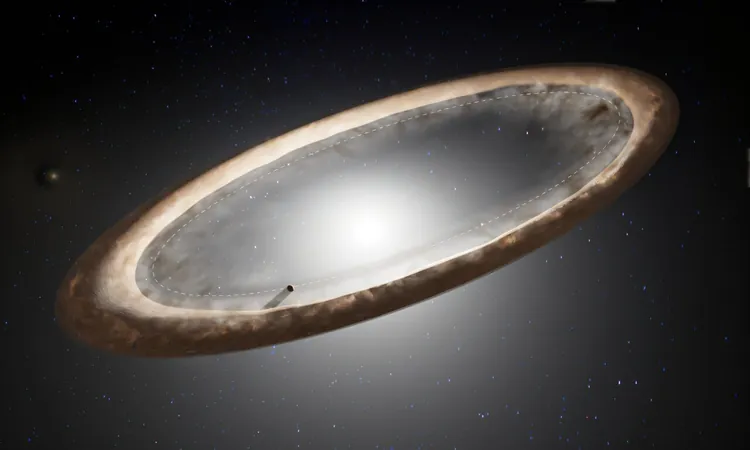
Discovering the Secrets of Fomalhaut: Ancient Planets Carving a Cosmic Mystery
2025-09-05
Author: Li
Unveiling Fomalhaut's Enigmatic Debris Disk
Astronomers have captured the highest resolution image of the mysterious debris disk surrounding Fomalhaut, a dazzling star that lights up our cosmic neighborhood. Utilizing the Atacama Large Millimeter/submillimeter Array (ALMA), they've revealed astonishing details about this disk, which is reminiscent of our solar system's asteroid belt but vastly larger!
The Eccentricity enigma of Fomalhaut's Disk
For nearly two decades, the odd shape, or eccentricity, of Fomalhaut's disk has piqued the interest of astronomers. This complex construction isn't just a static feature; recent findings show that its eccentricity actually varies depending on how far it is from the star! This groundbreaking revelation challenges previous beliefs that the disk maintained a fixed shape.
Revolutionary Discoveries by Leading Astronomers
An international team spearheaded by researchers from Harvard & Smithsonian and Johns Hopkins University published significant papers in The Astrophysical Journal, outlining this shocking new data. Lead author Joshua Bennett Lovell points out, "Our observations show, for the first time, that the disk’s eccentricity isn’t constant. It drops off as you move away from Fomalhaut." This finding is monumental, as it's the first of its kind in the field of debris disk research.
A Dynamic Model for a Dynamic System
Using high-resolution ALMA images, the researchers formulated a cutting-edge model that adjusts the disk's eccentricity based on distance from the star. This model aligns with dynamic theories suggesting that unseen planets could be responsible for shaping these debris disks, hinting at hidden worlds lurking in Fomalhaut's vicinity.
The Search for Hidden Giants
The discovery of varying eccentricity in Fomalhaut's disk raises exciting possibilities about massive planets orbiting within it. These planets may have played a crucial role in forming the disk’s peculiar shape during the early phases of the extrasolar system—a process that has lasted for over 400 million years!
Challenging Old Models
In a second paper led by Johns Hopkins graduate student Jay Chittidi, the team explored why previous models, which assumed a static eccentricity, could not adequately explain the peculiar luminosity and shape variations observed in Fomalhaut’s disk. Chittidi remarked, "We couldn't find a model with fixed eccentricity to account for these unique features, allowing us to reconstruct the dynamic history of this fascinating system."
A Window into Cosmic Evolution
Through these remarkable observations, astronomers not only deepen our understanding of Fomalhaut but also enhance our knowledge of cosmic evolution. The findings may one day lead us to discover new planets and understand the intricate dance of celestial bodies shaping the tapestry of our universe.


 Brasil (PT)
Brasil (PT)
 Canada (EN)
Canada (EN)
 Chile (ES)
Chile (ES)
 Česko (CS)
Česko (CS)
 대한민국 (KO)
대한민국 (KO)
 España (ES)
España (ES)
 France (FR)
France (FR)
 Hong Kong (EN)
Hong Kong (EN)
 Italia (IT)
Italia (IT)
 日本 (JA)
日本 (JA)
 Magyarország (HU)
Magyarország (HU)
 Norge (NO)
Norge (NO)
 Polska (PL)
Polska (PL)
 Schweiz (DE)
Schweiz (DE)
 Singapore (EN)
Singapore (EN)
 Sverige (SV)
Sverige (SV)
 Suomi (FI)
Suomi (FI)
 Türkiye (TR)
Türkiye (TR)
 الإمارات العربية المتحدة (AR)
الإمارات العربية المتحدة (AR)